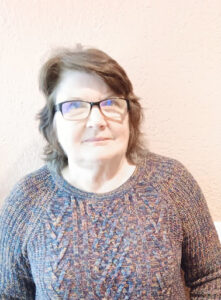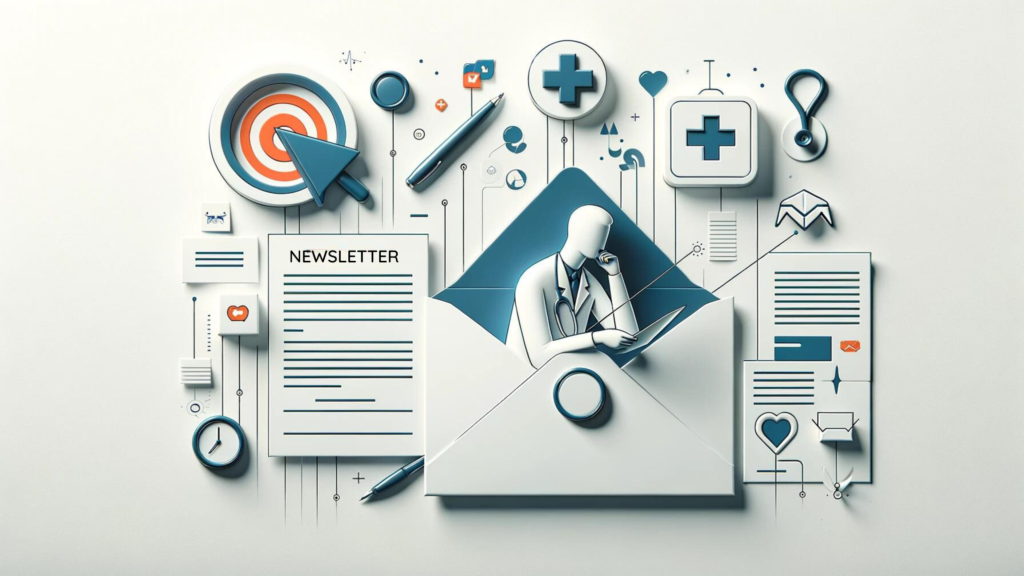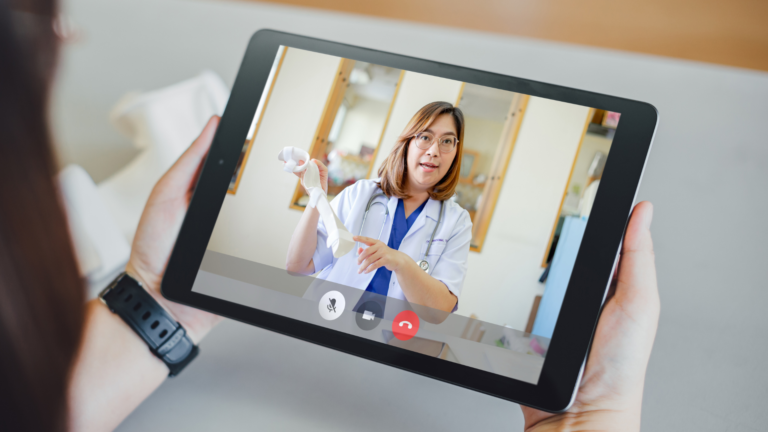- By Teresa Burgess RN, BSN, MS
An impactful healthcare newsletter combines relevant, engaging content with attractive visuals to resonate with its target audience. It delivers valuable information in an accessible language, supported by stories and illustrations, to connect with readers on a personal level. A clear call to action encourages further interaction, maximizing its effectiveness and reach.
Since the advent of the internet, savvy marketers have used email newsletters (eNewsletters) to help turn prospects into repeat customers. Healthcare newsletters allow providers and healthcare agencies to demonstrate care and strengthen client relationships. The strategies outlined will contribute to efficient content creation and management.
Understanding Your Audience: The Key to Effective Healthcare Newsletters
Patients and families with “niche” health issues may have trouble finding trusted information from general consumer websites, which is why targeting the correct audience with your healthcare newsletter is essential. Whether the audience is patients, vendors, customers, or colleagues, your newsletters will be most effective if designed for the specific group you hope to address. You want your customers to view you as someone who can fill their needs. Regularly scheduled healthcare newsletters can support earlier diagnoses and interventions and improve health outcomes while encouraging engagement and building trust from your readers.
Crafting Healthcare Newsletter Content that Resonates
Newsletters in the healthcare sector, skillfully created by experienced professionals, can captivate and establish a connection with your audience, guaranteeing a return on investment.
Create interest with compelling newsletter topics, such as “The Unexpected Connection Between Diet and Dementia” or “Tips for Maintaining an Active Sex Life as You Age.” Ensure your content is current and benefits consumers and healthcare providers, always reflecting best healthcare practices. Nurse writers are ideally suited for designing creative healthcare content, as they are great communicators, are empathetic, and are trained in problem-solving. They can ensure that your newsletter translates “medicalese” into language the consumer understands.
Designing for Impact: Visuals and Layout in Healthcare Newsletters
Visual healthcare-related elements are crucial in gripping the reader’s attention and making content more compelling. A catchy title, illustrations, easy-to-follow instructions, infused personality, and a conversational tone can make a healthcare newsletter more enjoyable for the audience. Storytelling by inserting a real-life experience can also intrigue the reader.
Include a call to action at the end of each newsletter to guide the reader on what to do next, such as subscribing, scheduling an appointment with their healthcare provider, or sharing the newsletter with others.
Maximizing Reach: Distribution Strategies for Healthcare Newsletters
A well-rounded marketing strategy uses multiple channels. Be sure that your newsletter targets your intended niche audience. Keep it light. For example, when addressing those whose healthcare issue is a chronic disease, remember they don’t want to be reminded that they’re sick. Worrisome statistics and boring disease details are much less effective than exploring how to live well with their condition. Additionally, nothing will lead your readers to unsubscribe faster than overt pleas for money or subscriptions.
Other tips include the following:
- Use health newsletter articles to drive readers to your blog or company website.
- Consider utilizing templates from Mailjet, Aha Media Group, or Flodesk to make your healthcare newsletter’s layout and visuals attractive.
- Send an interesting message at least once a month.
- Have a compelling subject line for your email.
- Encourage readers to “feel free to pass it on,” which creates a ripple effect for your newsletter.
Measuring Success: Analytics for Healthcare Newsletters
Use analytics to gain insight into the effectiveness of your distribution campaign. This step allows you to stay informed about how your marketing strategy works. You can capture your healthcare newsletter’s open rate, click-thru rate, subscription, and unsubscription rates. This information will give insight into your audience, your newsletter’s effectiveness, and ways to make improvements. But don’t just collect data. Use the data to design a data-driven newsletter.
A few favorite social media analytic tools, most of which have free trial periods, include the following:
- Google Analytics
- Avario
- Keyhole
- BuzzSumo
- Curalate
- BrandMentions
- Hootsuite
- Semrush
Keyhole is an excellent social media control tool for Twitter and Instagram users. It allows you to analyze user behavior by searching keywords, hashtags, URLs, and usernames.
FAQs
How can I tailor my healthcare newsletter content to my specific audience?
Be very specific about the healthcare audience you want to reach. Determine if they have prior knowledge about the subject matter. Decide why you created the newsletter (what are your learning objectives?). These things should affect your content design.
What are some effective design elements for healthcare newsletters?
The most important is the subject line and any preheader text because it is the first thing your audience sees. Other considerations include background, great visuals, prominent call-to-action buttons, and elements in the footer, such as social media and opt-out buttons. They will ensure you have a cleaner and more entertaining email list. Get the main story on the front page and then distribute smaller stories throughout the rest of the newsletter.
What distribution channels are most effective for healthcare newsletters?
Individuals come across content through diverse means. Employing multiple channels for your healthcare content marketing strategy is advisable to reach a broader audience. Google Ads, Facebook Ads, Instagram, LinkedIn, and Outbrain are examples of distribution networks that are effective in improving traffic.
How do I measure the impact of my healthcare newsletter?
Ask for feedback from your audience. Track metrics like click-through rate (CTR), unsubscribe rate, opt-in rate, after-click-activity, and open rate.
What are common mistakes to avoid in healthcare newsletter marketing?
- Publishing less than 100% factual information
- Not being cognizant of HIPPA regulations
- Making your newsletter about the sale
- Focusing on persuading rather than empowering
- Using jargon
- Ignoring reviews
- Branding inconsistently
- Not designing for the patient experience
Takeaways for Enhancing Healthcare Newsletters
Finding your correct audience and using skilled professionals to design your content goes a long way to making content engaging, enjoyable, and visually appealing for your reader. Employing a multi-faceted marketing approach, scrutinizing your efforts, and adjusting based on the analytical results will enhance your healthcare newsletter’s impact. If you need a skilled nurse writer to help with creative content, visit Write RN.
References
Abernathy, A., Adams, l.,Barrentt, M., Bechtel,C., Brennan, P., Butte, A., Faulkner, J., Fontaine, E.,Friedhoff, S.,Halamka, J., Howell, J., Johnson,K., Long,P., McGraw, D., Redonda, M., Lee, P., Perlin, J., Rucker, D., … Lew, S. (2022). The Promise of Digital Health: Then, Now, and the Future. Nam Prospectives, 10, 31478/202206e. https://www.ncbi.nlm.nih.gov/pmc/articles/PMC9499383/

About the Author
Teresa Burgess RN, BSN, MS
Teresa Burgess RN, BSN, MS, a California native, started her nursing career in Coronary Care, earning her CCRN while working at Loma Linda University Medical Center. She transitioned to Obstetrics and worked in high-risk OB at San Francisco General Hospital. After a stint in Obstetrics, she opted to transition to the Emergency Department, earning her CEN and MICN.
In her 45-year nursing career, she has acquired experience in diabetes education, advice nursing, nursing education, hospice and hospital quality assurance, and peer review. She retired from Kaiser Permanente in 2016 after 22 years and works as a freelance writer and consultant. She thrives on keeping her mind sharp and advocating for people with healthcare concerns.




